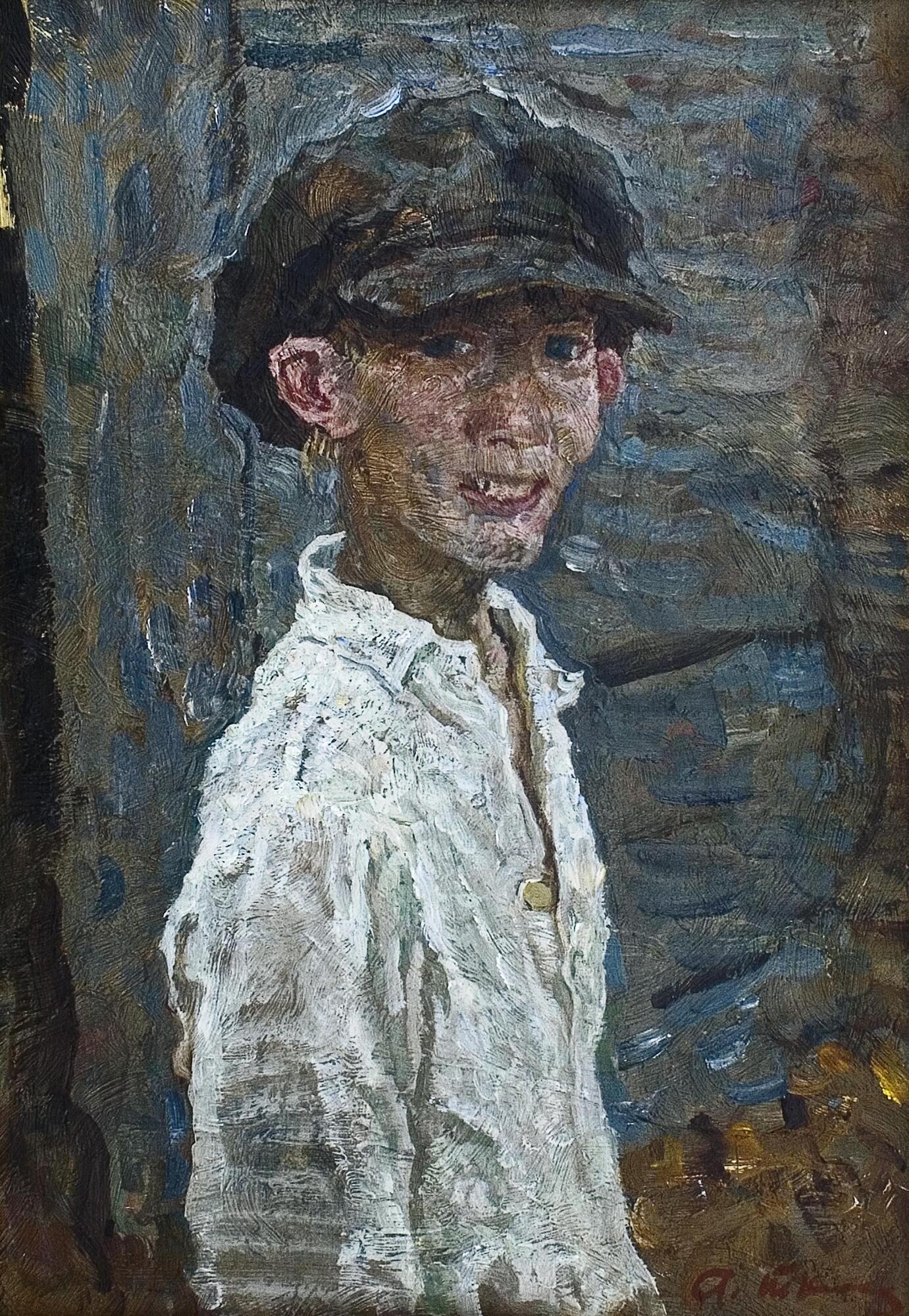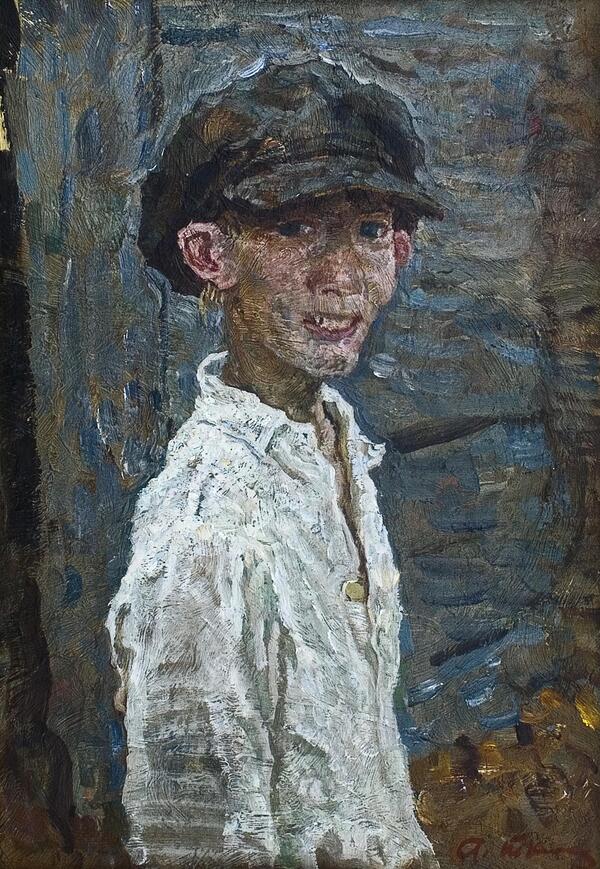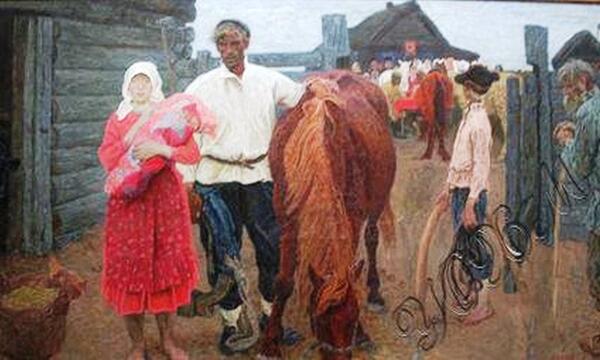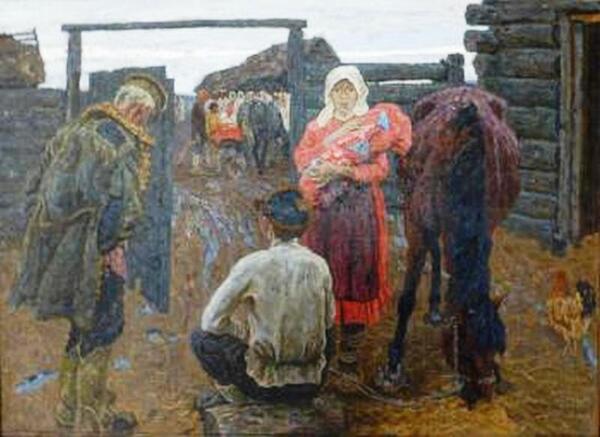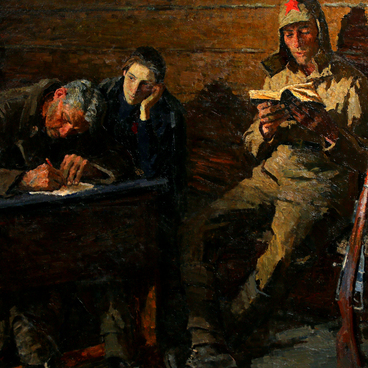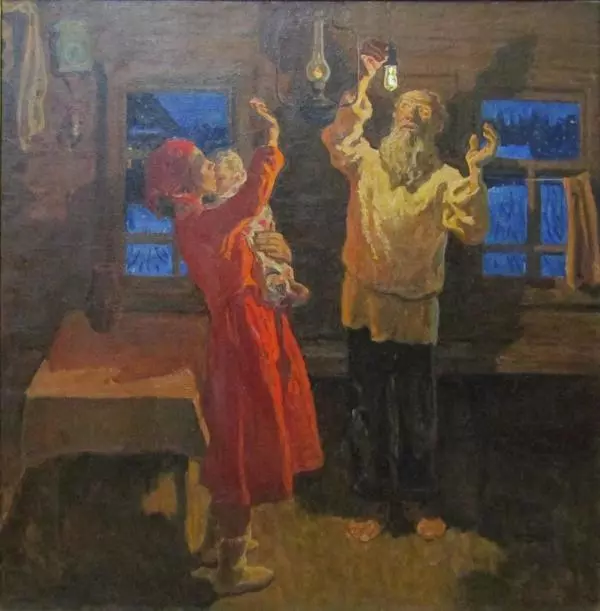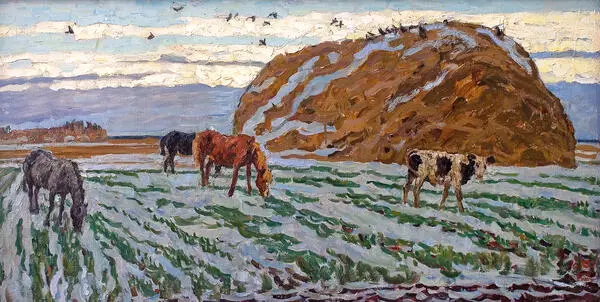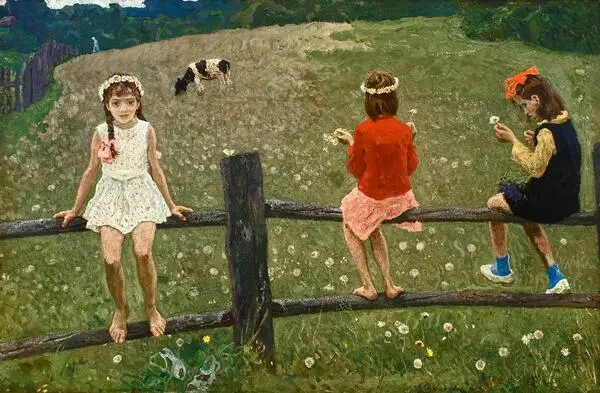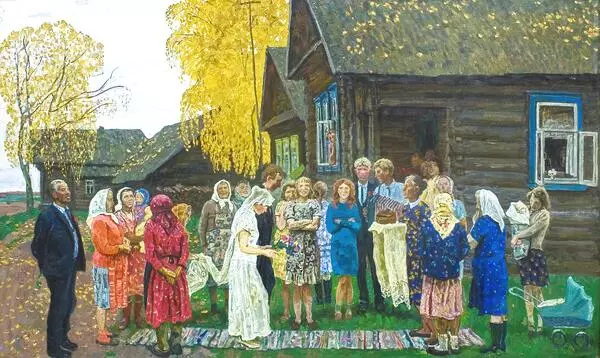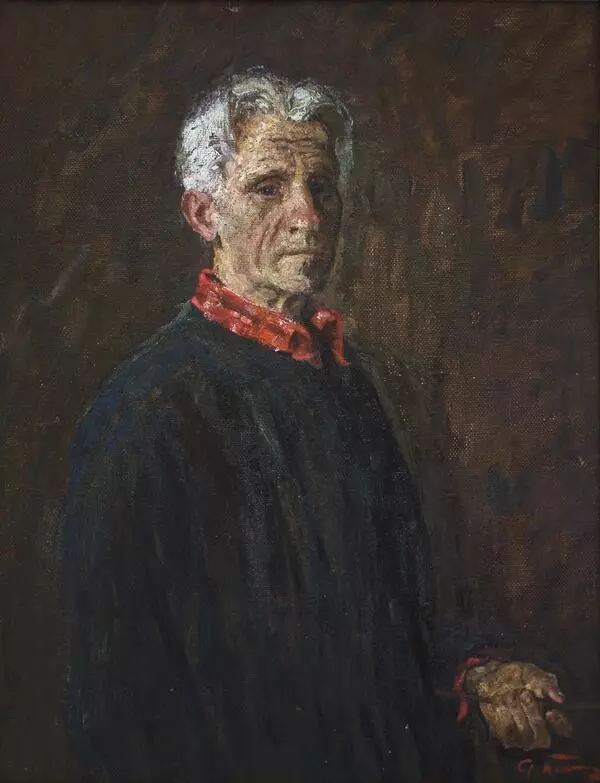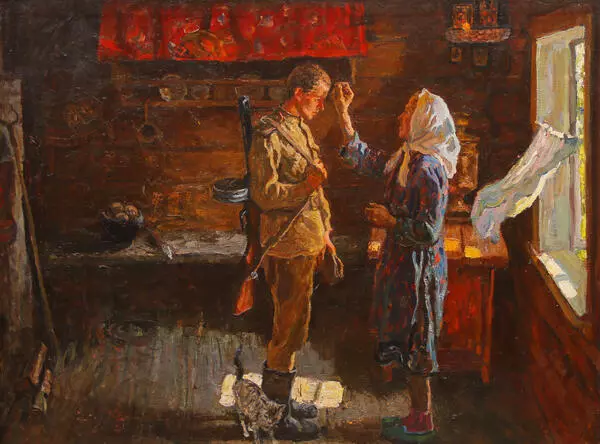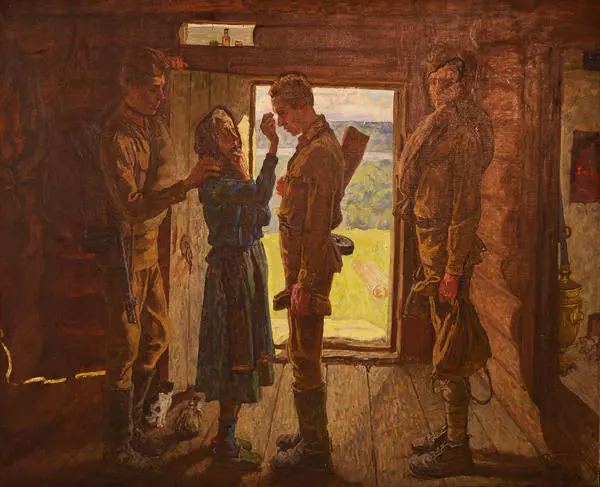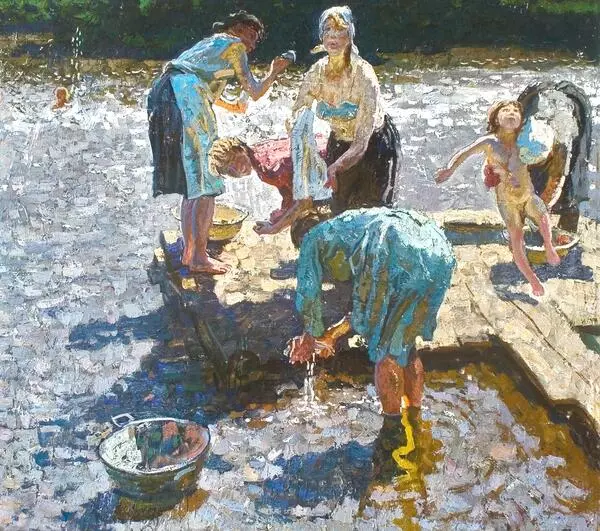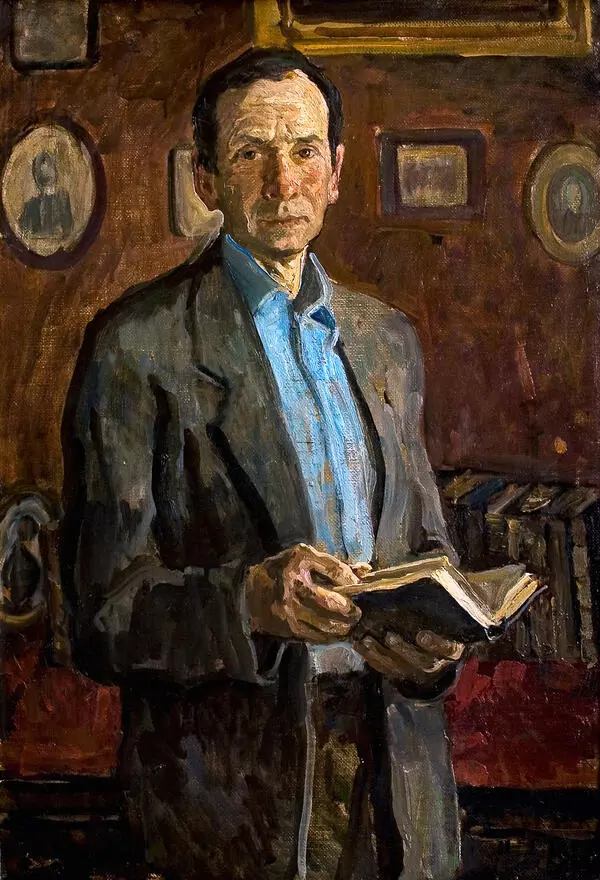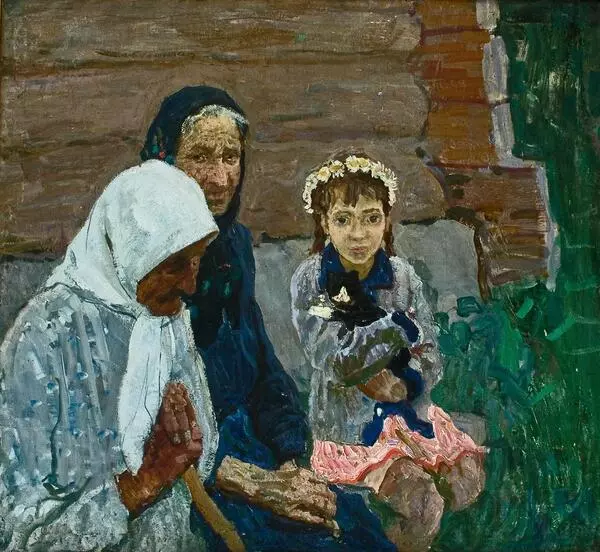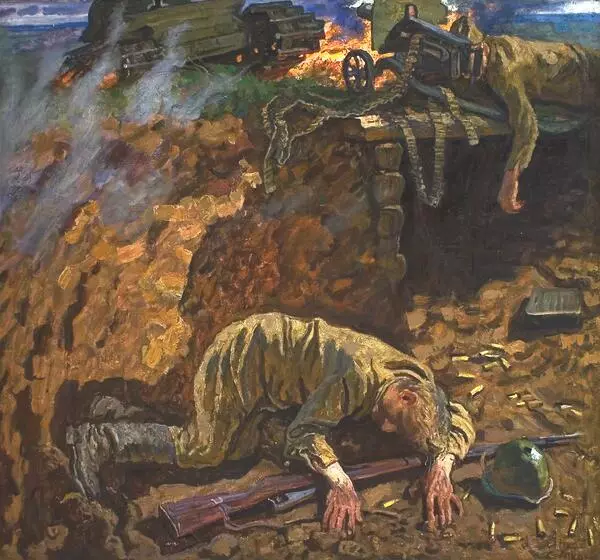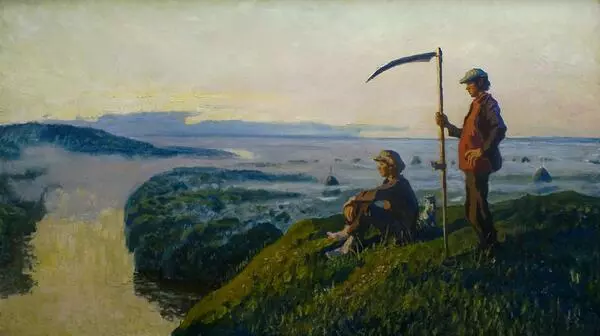Alexei Tkachyov worked on this study, called ‘The Boy’, in 1976. In it, he depicts a boy with large ears, wearing a ‘kartuz’ - the name given to peak caps. The hat is too big for the boy: most likely, he took it from his father or older brother. The boy is smiling strongly at the artist - he finds the idea of being a model for a painting amusing. The study was painted quickly and freely, with the quick brush strokes very obvious to the eye.
Alexei Tkachyov painted the boy whilst working on his painting ‘Kolkhoz’. In the 1970’s, he and his brother conceived a large painting on the theme of the collectivization of agriculture and tried to find a suitable scene for the painting. Whilst searching for suitable subjects for the painting, they worked on many different studies.
Studies are preparatory work for paintings, painted on the scene. They help an artist to better understand how each subject on the painting should be. Studies help to determine the color, light, perspective and composition of the future painting. Whenever the Tkachyov brothers were developing a larger work, they would always complete many studies.
They never used the services of professional models for their portraits. If the brothers wished to find subjects for paintings depicting a field, they would take their paints, brushes and canvases to a field and observe real farmers at work. They would follow the ploughmen and draw their portraits as they went. This approach always imbued their studies with life, as the artists could capture unusual movements and angles.
Alexei Tkachyov spotted the peak-capped boy in the village of Novoye Kotchishche. At that time, the village only had fifteen buildings, but this was ample for the future painting. Old ladies of a respectable age, strong men and curious village children all resided there. The artist found his big-eared subject amongst these residents.
Alexei Tkachyov painted the boy whilst working on his painting ‘Kolkhoz’. In the 1970’s, he and his brother conceived a large painting on the theme of the collectivization of agriculture and tried to find a suitable scene for the painting. Whilst searching for suitable subjects for the painting, they worked on many different studies.
Studies are preparatory work for paintings, painted on the scene. They help an artist to better understand how each subject on the painting should be. Studies help to determine the color, light, perspective and composition of the future painting. Whenever the Tkachyov brothers were developing a larger work, they would always complete many studies.
They never used the services of professional models for their portraits. If the brothers wished to find subjects for paintings depicting a field, they would take their paints, brushes and canvases to a field and observe real farmers at work. They would follow the ploughmen and draw their portraits as they went. This approach always imbued their studies with life, as the artists could capture unusual movements and angles.
This would be impossible to achieve in a studio - fabricated poses look dull and this drabness will undoubtedly be transferred to the viewer.
Alexei Tkachyov spotted the peak-capped boy in the village of Novoye Kotchishche. At that time, the village only had fifteen buildings, but this was ample for the future painting. Old ladies of a respectable age, strong men and curious village children all resided there. The artist found his big-eared subject amongst these residents.
